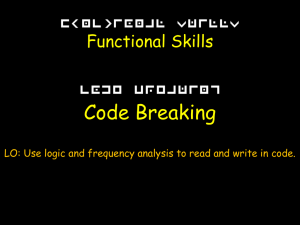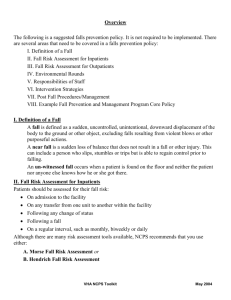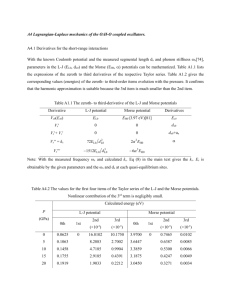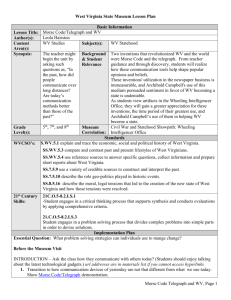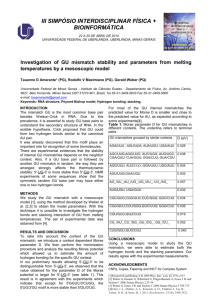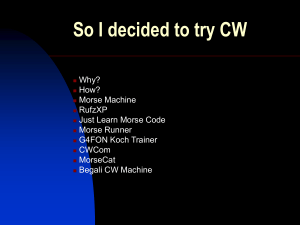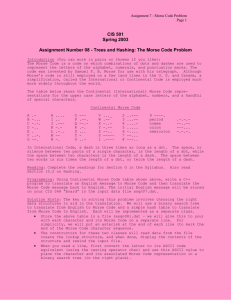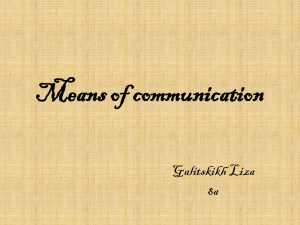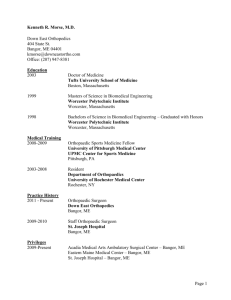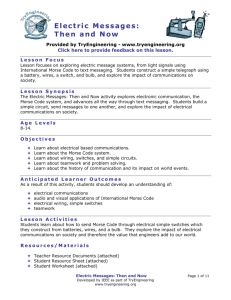Intro to CW mode A1A
advertisement
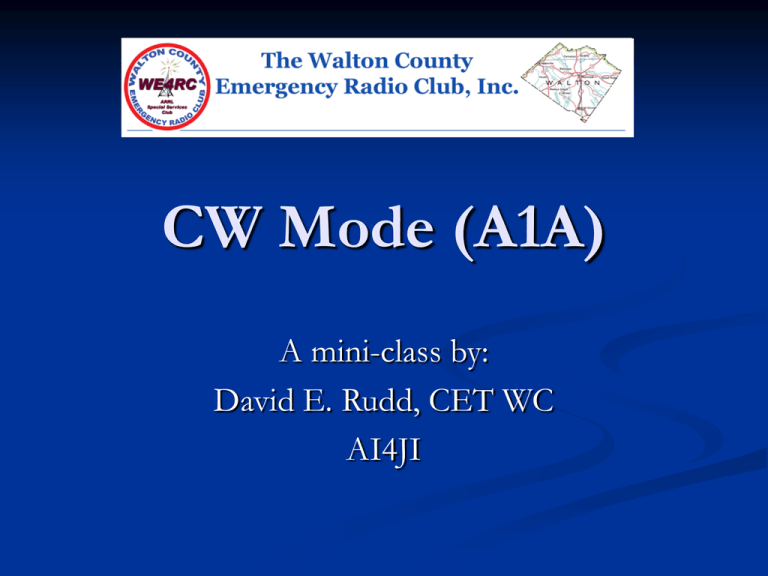
CW Mode (A1A) A mini-class by: David E. Rudd, CET WC AI4JI What is CW? CW stands for “Continuous Wave.” It is a method of transmitting textual messages as a series of on-off tones. (Morse Code) It can be directly understood by a skilled listener without any special equipment. Each letter, number and punctuation is represented by a unique series of dots and dashes. Dashes are 3 times longer than a dot. Morse Code History Samuel F. B. Morse did not invent the Morse Code, it was originally developed for his telegraph machine by Alfred Vail in the early 1840’s. That first code was the basis on which the modern day, International Morse Code (IMC) was founded. In the early 20th century, most high-speed international communications took place via Morse Code on telegraph lines, undersea cables and over radio. Morse Code History Variable Character Lengths, a limited character set and the lack of Forward Error Correction made this mode unsuitable for computer reception. With the incorporation of the computer, and newer digital modes, Morse Code ended as a means of commercial message transmission. Who uses Morse Code Today? Pilots and Air Traffic Controllers. ALL navigational beacons worldwide, identify themselves via CW and Morse Code ID’s. Amateur Radio Operators. Commercial Radio Technicians. Radio Repeaters identify in Morse Code. Ship Radio Operators. (no longer required) Military Units Worldwide. Why use CW and Morse Code? CW is a highly efficient means of transmission. CW transmitters are very simple and do not need modulation stages. CW transmitters are inexpensive to build. CW transmissions can easily be received by inexpensive short wave receivers. CW and Morse Code are very professional modes to communicate with. CW Facts Most Amateur Radio Operators around the world still build their own equipment. CW gear is much easier to build and is inexpensive. Works perfectly with simple, inexpensive wire antennas. Is the most economical station to set up, especially in 2nd and 3rd world countries. Who can operate CW? All licensed amateur radio operators. All of the amateur radio bands have a segment allocated for CW. All U. S. licensed amateur radio operators have CW privileges in the HF bands. Learn the code and get on the air. Become a member of a CW organization. Get the Real DX, any time. Operators from every country use CW. More rare countries will be on CW. Regardless of conditions, the CW segments of the bands ALWAYS have activity. There are more CW operators than there are SSB Voice operators. You will ALWAYS hear DX stations on CW. Most foreign hams don’t own a microphone! Learn the Code Code Quick Gordon West ARRL Military Method Farnsworth Who do you talk to? Listen in the CW (Lower) section of the band. Listen for a specific call sign. Answer a CQ. “JY1 DE AI4JI AI4JI AI4JI KN” Put out a CQ of your own. “CQ CQ CQ DE AI4JI AI4JI AI4JI K” What do you talk about? There are a few items that must be exchanged for a valid QSO. Call Sign and Name of the operator. Location of the station. RST signal reports. (sent and received) The RST System RST stands for Readability, Signal, Tones. Readability, 0 = unreadable, 5 = best. Signal Strength, from the S-meter, 1 = worst, 9 = best. Tones, quality, 0 = worst, 9 = best. A strong station with good tones = 599. A weak station with poor tones way be as low as a 111. New CW op’s QSO template “_______ de AG4BR tnx fer call. Name is bob bob bob. QTH walnut grove, ga. QTH is walnut grove, ga walnut grove, ga. UR RST is ______, ______, _______. hw cpy? __________ de AG4BR CW Clubs and Associations FISTS (The International Morse Preservation Society) QCWA (Quarter Century Wireless Association) STCC (Straight Key Century Club) FOC (First Class CW Operator’s Club) NAQCC (North American QRP CW Club) Various others. CW Review Requires expanding your mind and learning a new skill and language. Requires only rudimentary equipment Is a very efficient means of transmission Great for working DX Gets through the QRN and QRM Local, Internal CW Interests We have several club members who are actively interested in CW There are CW Practice nets The ARRL has a practice CW sessions live over the airwaves daily on a fixed schedule. This has been an introductory class on CW By: AI4JI David E. Rudd, CET WC

